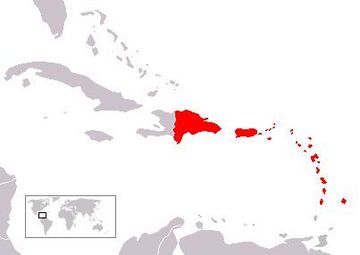Great hurricane of 1780 facts for kids

Areas affected by the hurricane (but not showing Bermuda)
|
|
| Formed | October 9, 1780 |
|---|---|
| Dissipated | October 20, 1780 |
| Highest winds | Gusts: 200 mph (320 km/h) |
| Fatalities | 22,000+ direct |
| Areas affected | Lesser Antilles, Puerto Rico, Dominican Republic, Bermuda, possibly Florida and other US states |
| Part of the 1780 Atlantic hurricane season | |
The Great Hurricane of 1780 was the deadliest Atlantic hurricane ever recorded. It killed more than 27,500 people when it passed through the Caribbean. There is not much known about the storm, because it happened before people took official records of hurricanes.
The hurricane hit Barbados with winds possibly over 200 mph (320 km/h). It then moved past Martinique, Saint Lucia, and Saint Eustatius. Thousands of deaths were reported on each island. In the middle of the American Revolution, the storm caused heavy losses to British and French fleets.
The hurricane later passed near Puerto Rico and tracked over the eastern portion of the Dominican Republic. It eventually turned to the northeast, and was last seen on October 20 to the southeast of Newfoundland.
The hurricane was part of the very bad 1780 Atlantic hurricane season, with two other deadly storms during the same month. The Great Hurricane killed more than twice as many people as Hurricane Mitch did (Hurricane Mitch was the second deadliest hurricane in the Atlantic Ocean).

